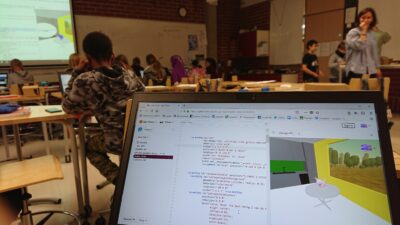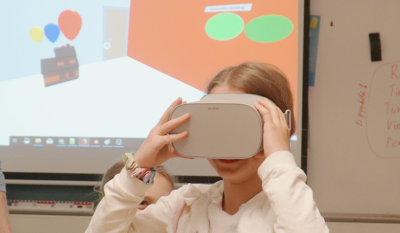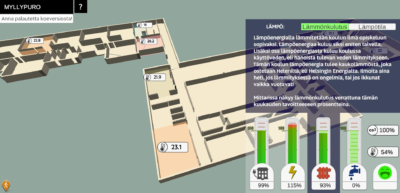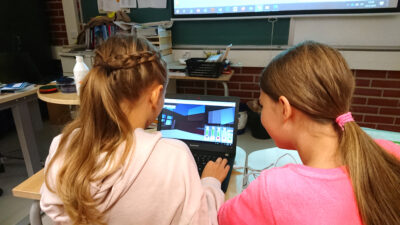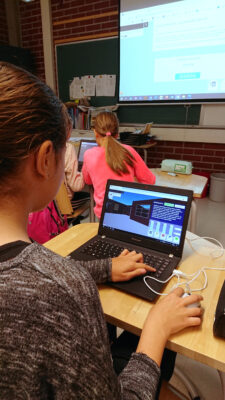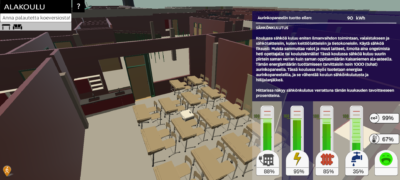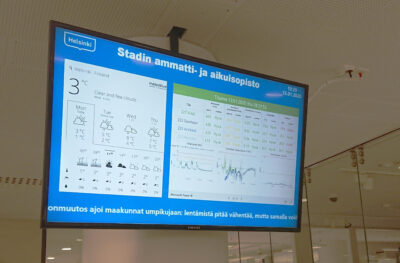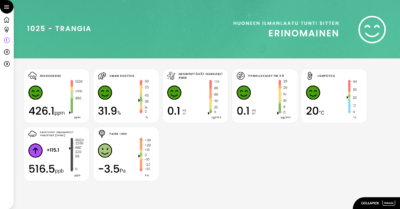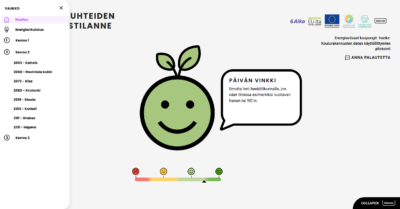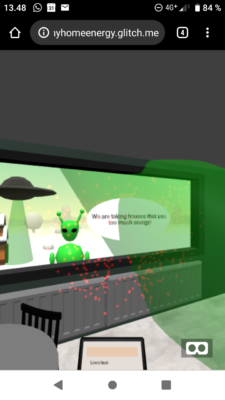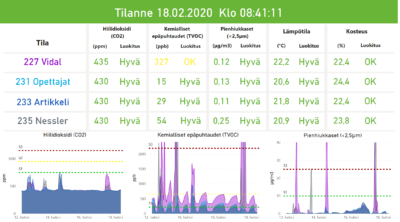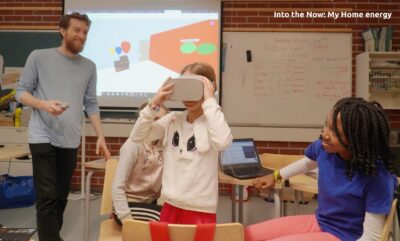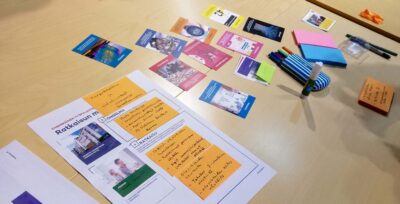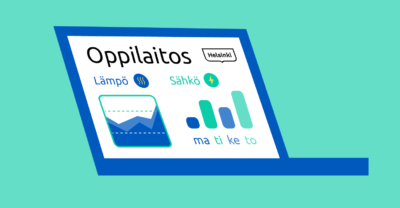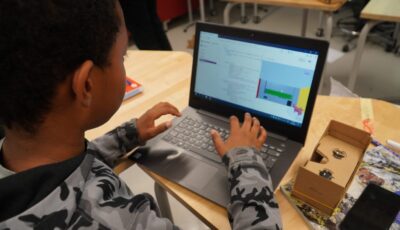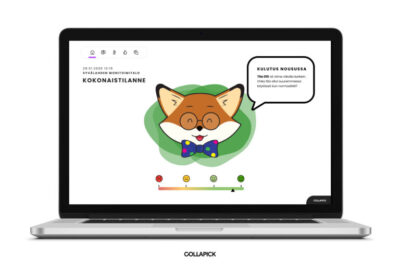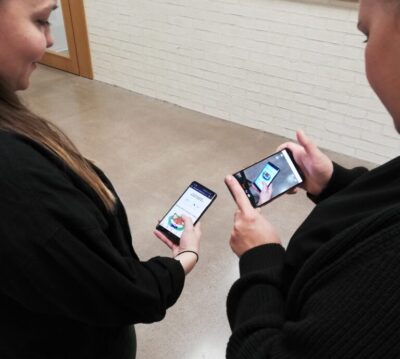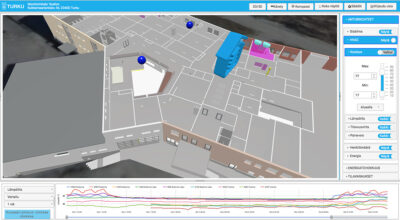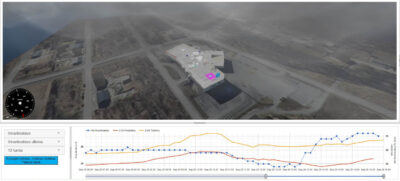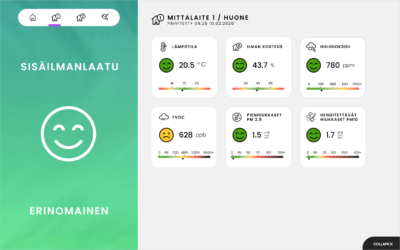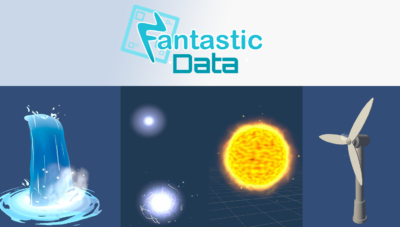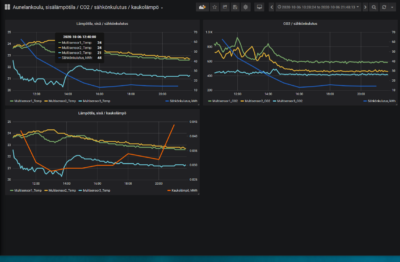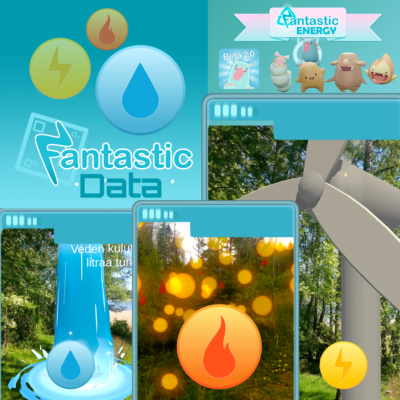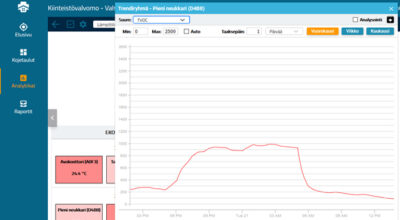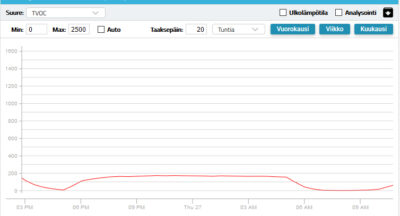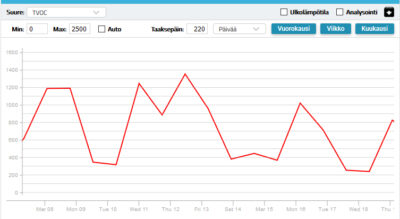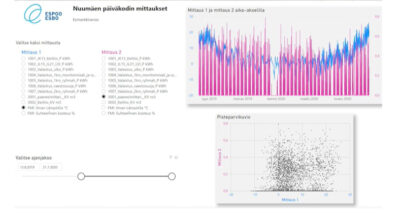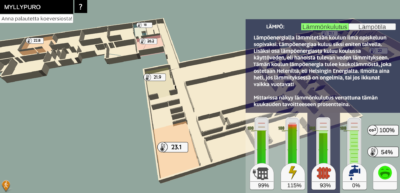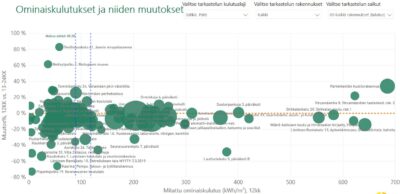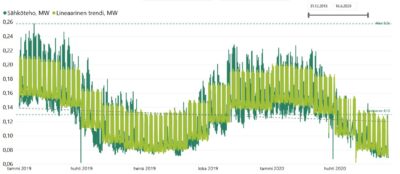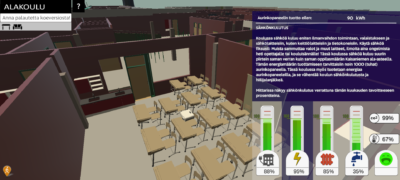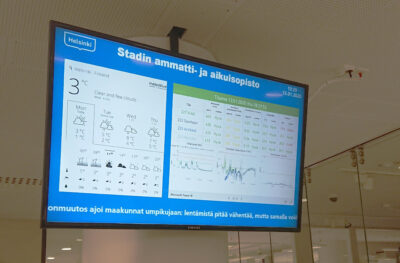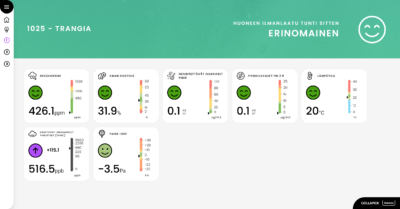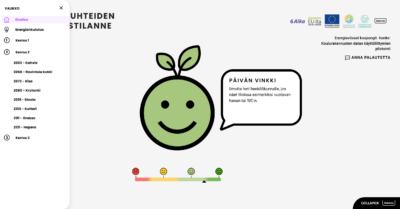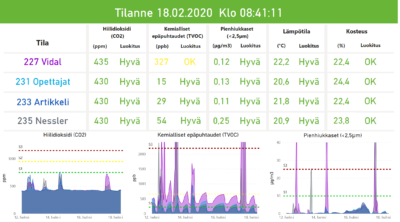Together with the City of Helsinki, Playsign Ltd has developed, in the Energy Wise Cities project, digital twins or user interfaces for three primary schools in Helsinki. The user interfaces visualise, in building information models (BIM models), energy and conditions data measured at the schools.
The main user group of the solutions developed by Playsign in this pilot were the pupils aged 11–12 years and the teachers at the schools. The intention was to enable, with the help of the user interfaces used with a browser, a real-time monitoring of the energy consumption and conditions at the schools, supporting the teaching. At the same time, the users became more aware of the conditions and energy consumption of the school buildings, and the opportunities to influence them. The solution developed by Playsign is based on BIM models. The solution is a digital twin that uses the Unity game engine.
Partners
The City of Helsinki’s Built Assets Management and Education Division
Nuuka Solutions
Smartwatcher
Collapick Company
Playsign
Challenges
The users of service buildings, such as schools, have not had an opportunity to receive information regarding how their activities affect the indoor conditions or energy consumption. For example, if the air in a classroom during a lesson has been hot and stuffy, it has not been possible to check the amount of carbon dioxide and the temperature and to find out how a break or airing has affected them. In addition, the data to be collected on the buildings has been dispersed in various systems: an energy company, deliverers of the building automation systems and the City of Helsinki. The City of Helsinki’s actors have not had a proper overall picture of what opportunities the collection and visualisation of data would bring, or how the BIM models could be utilised.
Objectives
The idea was to implement and test in practice a digital twin that is used with a browser at three schools. The objective was to enable a real-time monitoring of the energy consumption and conditions at the schools, supporting the teaching. With the help of the user interfaces and a BIM model, the idea was to visualise where energy is consumed – i.e. the management of conditions, such as room temperatures and carbon dioxide concentrations – as well as to inform the users whether the energy consumption target has been met or whether too much energy has been consumed. The goal was to find out if the pupils and teachers would be able to learn new things with the help of the system and whether the system would be useful in teaching.
Results
During the pilot, Playsign developed new features for a system that visualises conditions, such as the visualisation of energy data, a demonstration of the energy objectives and production, a new control panel for the user interface, as well as a new perspective view. The City of Helsinki, Playsign and Collapick also developed explanations, teaching materials and tips for the use of the buildings in connection with the metering data. The participating pupils and teachers liked to use the system, and the system was regarded as useful in the teaching of energy matters, which are difficult to understand. The opportunity to walk in the school model was particularly praised.
Matters learned so far
The experiment taught a great deal regarding how these kinds of solutions can be implemented in and scaled to the entire building stock of Helsinki in the future. Playsign has stated that in the future, it would be best if the BIM models of construction projects would be readily suitable for the making of digital twins and for data visualisation. During the experiment, it has also been discussed how digital twins and the publishing of data affect the safety and security of schools. Many things have also been learned regarding what kind of methods should be used in the measuring of quantities dealing with energy, how the quantities should be grouped and how difficult it is to set energy objectives: the objectives must be accessible if the idea is to visualise them for users and if the idea is to change their behaviour. The experiment has also shown what kind of solutions the users of the buildings are interested in and how the City of Helsinki could benefit from the solutions. Thanks to the visuality of the digital twin developed by Playsign, the City of Helsinki detected several errors in its meter data, as well as data interruptions. Playsign has received a great deal of feedback on its user interface directly from the users, and the cooperation with the City of Helsinki has been very successful. Furthermore, the company won an innovation competition of the UIA-HOPE project with its entry that was based on the work conducted in this pilot.

